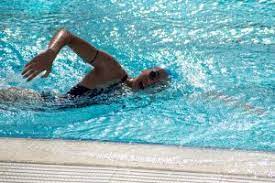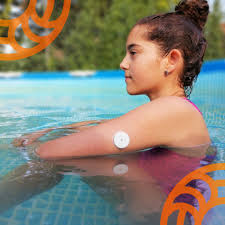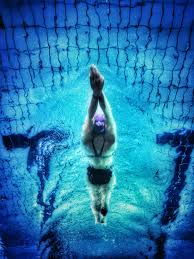How to Start Swimming to Manage Type 2 Diabetes?
- admin
- August 2, 2025
- 7:48 pm
- No Comments

Swimming is more than just a fun way to cool off—it is a full-body, low-impact workout that can help manage type 2 diabetes.
Unlike jogging for diabetes control or weightlifting, swimming doesn’t stress the joints, making it ideal for people with mobility issues, arthritis, or excess body weight.
Plus, the rhythmic movement of swimming helps regulate blood sugar levels, improve cardiovascular health, and boost overall fitness.
In this article, Best Dietary Supplement for Diabetics shall dive into how swimming supports diabetes management, how to get started safely, and how to build a sustainable routine.
Backed by the latest scientific findings and expert recommendations, you would find step-by-step guidance tailored to your health goals.
Points Covered in this Article
- Benefits of swimming for type 2 diabetes management
- How to begin swimming with type 2 diabetes safely
- Monitoring blood glucose while swimming in diabetes
- Building a swimming exercise routine for type 2 diabetes control
- Combining nutrition and swimming to manage blood sugar
- Progressive swimming plan for weight loss and insulin sensitivity
- Long-term motivation strategies when swimming with diabetes
- Conclusion
Benefits of Swimming for Type 2 Diabetes Management
Swimming offers a trifecta of benefits: aerobic conditioning, strength-building, and blood sugar regulation.
Studies have shown that people with type 2 diabetes who swim regularly can reduce their fasting glucose, HbA1c, blood pressure, and LDL cholesterol.
It is a full-body workout that engages all major muscle groups, increasing insulin sensitivity in adults while helping burn fat.
What makes swimming especially suitable for people with diabetes is its low-impact nature.
The buoyancy of water reduces strain on joints and ligaments, making it easier to stay active without risking injury. This is especially important for those with diabetic neuropathy or arthritis.
Swimming also supports mental well-being. The repetitive, meditative rhythm of swimming helps reduce stress and cortisol levels, which in turn can improve blood sugar control.
And because it is enjoyable and easy to vary—laps, water aerobics, aqua jogging—it is more likely to become a long-term habit.
Whether you are just starting or looking to complement your current fitness plan, swimming is a powerful and pleasant way to manage diabetes holistically.
How to Begin Swimming with Type 2 Diabetes Safely?
Before diving into the pool, it is essential to consult your healthcare provider, especially if you are on insulin or medications that lower blood sugar. Exercise can cause your glucose levels to drop, so you may need to adjust dosages or meal timing.
Once you get the green light, choose a swimming facility with certified lifeguards. If you are new to swimming or have not been in the water for years, consider taking beginner lessons. A qualified instructor can teach you basic strokes, breathing techniques, and water safety skills.
Start slow and steady. Two to three sessions per week, each lasting about 20–30 minutes, is a good place to begin. Focus on comfort, form, and consistency rather than speed or endurance. Always warm up before and cool down after each session with light movements or stretches.
Be mindful of foot care. People with diabetes are prone to foot ulcers, so check for any cuts or blisters before and after swimming. Wear protective swim shoes if needed. Swimming should always feel safe and enjoyable—not stressful or rushed.

Monitoring Blood Glucose while Swimming in Diabetes
Tracking your blood glucose is key when incorporating swimming into your diabetes management plan.
Exercise typically lowers blood sugar, both during the session and for several hours afterward. For this reason, it is vital to check your levels before, during (if possible), and after your swim.
Aim to start your workout with a glucose level above 100 mg/dL, especially if you are insulin-dependent. Keep a fast-acting carbohydrate—like glucose tablets or a small juice box—poolside in case of hypoglycemia.
If you are swimming for more than 45 minutes, consider a quick snack midway to maintain stable energy levels.
If you use a continuous glucose monitor (CGM), make sure it’s waterproof. Some devices can stay on during swimming, while others must be removed.
Discuss with your doctor whether any insulin adjustments are necessary on swim days. Often, you will need to reduce your insulin dose to avoid going too low.
Recording your blood sugar patterns in relation to your swimming schedule can help you fine-tune your routine over time.
The goal is to keep your numbers in a safe range while enjoying the physical and metabolic benefits of being in the water.
>>> Want to Learn How I Revered My “Type 2 Diabetes Naturally” at Home??? Click Here to Find Out! <<<
Building a Swimming Exercise Routine for Type 2 Diabetes Control
Creating a structured swim plan boosts both motivation and results. The general recommendation for adults with diabetes is 150 minutes of moderate-intensity aerobic activity per week.
That could be five 30-minute swim sessions or three longer ones.
Begin with a gentle warm-up: five to ten minutes of floating, walking through water, or light kicking.
The main set could be freestyle laps, backstroke, or even water jogging. Afterward, cool down with slow movements or stretches outside the pool.
As your fitness improves, add variety to your workouts. Alternate between short sprints and longer endurance sets.
Try resistance tools like pool noodles, paddles, or water dumbbells to build strength. You can also add interval training for better cardiovascular conditioning and fat loss.
Keep a swim journal to track your session duration, intensity, and how you felt afterward. This makes it easier to spot progress, troubleshoot energy dips, and identify patterns in your blood sugar control.
Like any effective routine, consistency is the real game-changer.
Combining Nutrition and Swimming to Manage Blood Sugar
Proper nutrition is the foundation of any exercise plan, especially for those managing type 2 diabetes. What you eat before and after swimming directly impacts your blood sugar and energy levels.
Try not to swim immediately after a heavy meal. Ideally, wait three to four hours after eating.
If you are swimming in the morning or between meals, a small snack containing carbohydrates and protein—like a banana with nut butter—can help stabilize blood sugar during the workout.
For long swim sessions, keep a small snack handy in case of a glucose dip.
After your workout, focus on a balanced meal that includes complex carbs, lean protein, and healthy fats.
This helps replenish energy stores and supports muscle recovery.
Hydration is also critical. Even though you are surrounded by water, swimming can dehydrate you quickly. Drink water before and after your session to keep your metabolism and glucose levels stable.
Finally, track how your meals interact with your swim sessions. Everyone is response is different, and documenting your routine will help refine what works best for you.
Progressive Swimming Plan for Weight Loss and Insulin Sensitivity
Swimming is a powerhouse when it comes to weight loss and improving insulin sensitivity.
To get the most out of it, you need a plan that gradually increases in intensity and duration while allowing for rest and recovery.
Start with 20-minute swims, three times per week. Once that feels manageable, increase to 30–45 minutes and add a fourth session.
As your endurance builds, incorporate interval training—alternating short bursts of speed with slower recovery laps.
You might also explore cold-water swimming, which has been linked in some studies to enhanced metabolic rate and better insulin signaling.
Just be sure to consult your doctor before trying it, especially if you have heart issues or circulation problems.
Tracking your weight, waist circumference, and blood sugar trends over several months will show how your body is responding.
Losing just 5–10% of your body weight can significantly improve insulin sensitivity and reduce the need for medications.
Make swimming part of a broader strategy that includes meal planning (such as avoiding gluten to prevent insulin spikes), stress management, and regular medical checkups. When combined, these steps can lead to lasting metabolic health.

Long-Term Motivation Strategies when Swimming with Diabetes
Sticking with any exercise routine can be challenging, especially when progress feels slow. The key to long-term motivation is making swimming a habit you look forward to—not a chore you dread.
Set realistic, short-term goals like completing three swim sessions in a week or mastering a new stroke. Celebrate those small victories—they add up! Join a swim class, aqua fitness group, or find a swimming buddy to keep things social and fun.
Use a fitness tracker or app to log your workouts and see your progress over time. Some smartwatches even track swimming strokes, distance, and calories burned, which can be highly motivating.
When energy or enthusiasm wanes, revisit your “why.” Maybe it is to lower your A1c, improve your mobility, or simply feel better in your body. Whatever your reason, keep it front and center.
Remember: consistency beats perfection. Even if you skip a few sessions, do not give up. Just get back in the pool and keep moving forward—one stroke at a time.
What We Have Learnt from this Article
Swimming is a wonderful tool in the toolbox of type 2 diabetes management.
It is low-impact, effective, and adaptable to every fitness level, making it ideal for those with joint pain, excess weight, or mobility challenges.
But many people with diabetes struggle to stay consistent with exercise, often due to fluctuating blood sugar, lack of motivation, or fear of hypoglycemia.
The solution?
Start with small, manageable swim sessions and gradually build a routine that fits your lifestyle. Monitor your blood sugar using a glucometer before and after each swim, and keep fast-acting carbs nearby.
Pair your swimming with balanced nutrition, routine medical checkups, and clear communication with your healthcare provider to avoid setbacks.
Even if you are just doing gentle laps, water aerobics, or floating with family, it counts. Every session helps regulate blood glucose, reduce stress, and boost energy.
The key is consistency. Make swimming your habit, and your health will follow suit.
References: